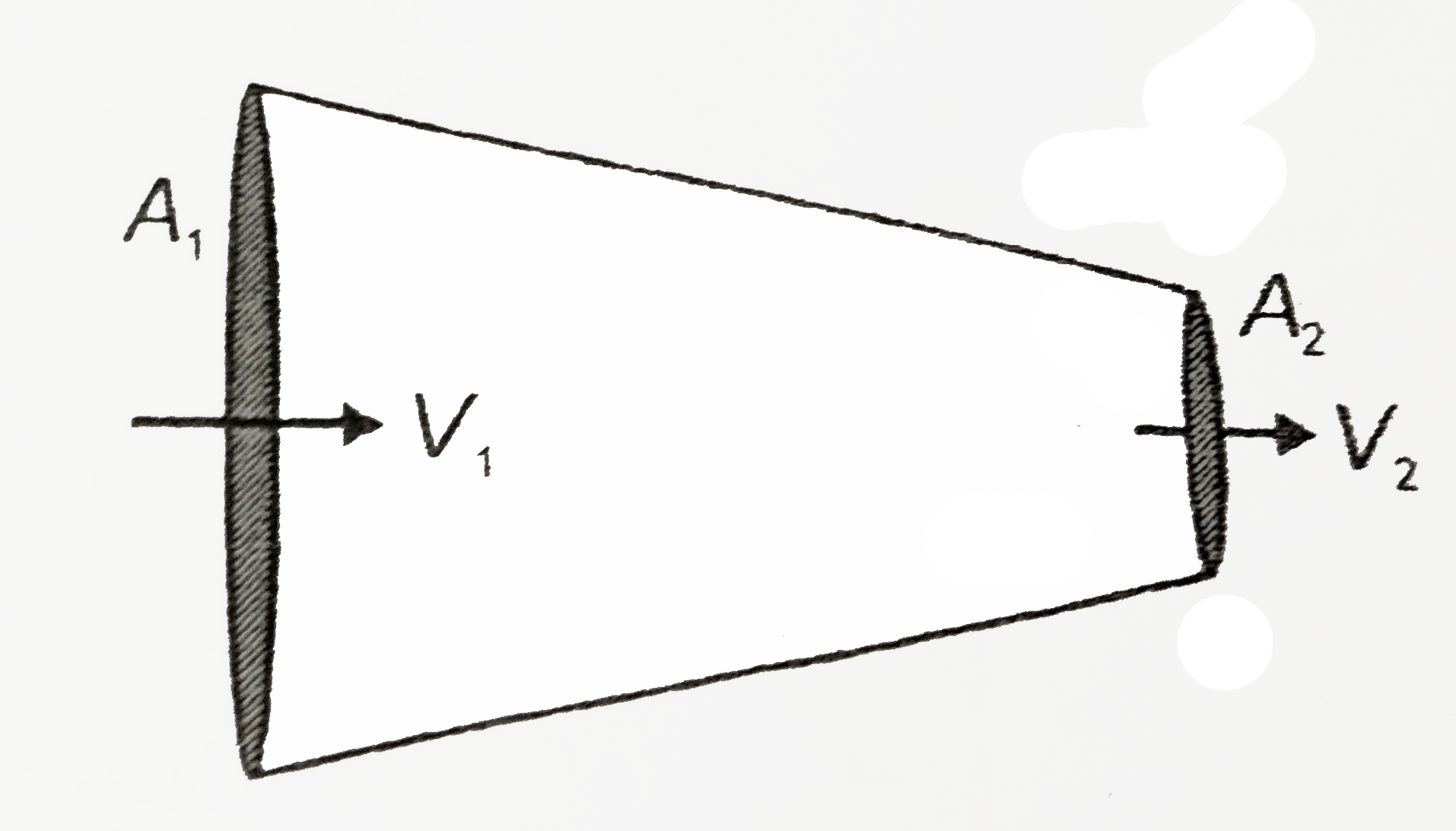An oil of relative density 0.9 and viscosity 0.12kg/ms flows through a 2.5cm diameter pipe with a pressure drop of 38.4kN/m2 in a length of 30m. Determine
Determine the discharge
2.16×10−4m3/s
2.9×10−3m3/s
1×10−4m3/s
2×10−4m3/s
The correct Answer is:C
To determine the discharge of oil flowing through a pipe, we can use the Poiseuille equation, which relates the discharge (Q) to the pressure drop (ΔP), the viscosity (η), the diameter of the pipe (D), and the length of the pipe (L). The equation is given by:
Q=πD4ΔP128ηL
1. Identify the Given Values:
- Relative density of oil (not needed for discharge calculation)
- Viscosity (η) = 0.12 kg/(m·s)
- Diameter of the pipe (D) = 2.5 cm = 0.025 m (convert to meters)
- Pressure drop (ΔP) = 38.4 kN/m² = 38,400 Pa (convert to Pascals)
- Length of the pipe (L) = 30 m
2. Convert Diameter to Meters:
D=2.5cm=0.025m
3. Calculate D^4:
D4=(0.025)4=3.90625×10−9m4
4. Substitute Values into the Poiseuille Equation:
Q=π×(3.90625×10−9)×(38400)128×0.12×30
5. Calculate the Denominator:
Denominator=128×0.12×30=460.8
6. Calculate the Numerator:
Numerator=π×3.90625×10−9×38400≈4.733×10−4
7. Calculate the Discharge (Q):
Q=4.733×10−4460.8≈1.026×10−6m3/s
8. Final Result:
Q≈1.026×10−6m3/s≈1.026L/s
Final Answer:
The discharge of the oil through the pipe is approximately 1.026L/s.
- Relative density of oil (not needed for discharge calculation)
- Viscosity (η) = 0.12 kg/(m·s)
- Diameter of the pipe (D) = 2.5 cm = 0.025 m (convert to meters)
- Pressure drop (ΔP) = 38.4 kN/m² = 38,400 Pa (convert to Pascals)
- Length of the pipe (L) = 30 m
D=2.5cm=0.025m
D4=(0.025)4=3.90625×10−9m4
Q=π×(3.90625×10−9)×(38400)128×0.12×30
Denominator=128×0.12×30=460.8
Numerator=π×3.90625×10−9×38400≈4.733×10−4
Q=4.733×10−4460.8≈1.026×10−6m3/s
Q≈1.026×10−6m3/s≈1.026L/s
The discharge of the oil through the pipe is approximately 1.026L/s.
Topper's Solved these Questions
- BOOK - CENGAGE PHYSICS ENGLISHCHAPTER - PROPERTIES OF SOLIDS AND FLUIDSEXERCISE - Integer6videos
PROPERTIES OF SOLIDS AND FLUIDS
- BOOK - CENGAGE PHYSICS ENGLISHCHAPTER - PROPERTIES OF SOLIDS AND FLUIDSEXERCISE - Fill In The Blanks1videos
PROPERTIES OF SOLIDS AND FLUIDS
- BOOK - CENGAGE PHYSICS ENGLISHCHAPTER - PROPERTIES OF SOLIDS AND FLUIDSEXERCISE - Assertion- Reasoning13videos
PROPERTIES OF SOLIDS AND FLUIDS
- BOOK - CENGAGE PHYSICS ENGLISHCHAPTER - NEWTON'S LAWS OF MOTION 2EXERCISE - Integer type1videos
NEWTON'S LAWS OF MOTION 2
- BOOK - CENGAGE PHYSICS ENGLISHCHAPTER - RIGID BODY DYNAMICS 1EXERCISE - Integer11videos
RIGID BODY DYNAMICS 1
Similar Questions
An oil of relative density 0.9 and viscosity 0.12kg/ms flows through a 2.5cm diameter pipe with a pressure drop of 38.4kN/m2 in a length of 30m. Determine
Determine the shear stress at the pipe wallView SolutionAn oil of relative density 0.9 and viscosity 0.12kg/ms flows through a 2.5cm diameter pipe with a pressure drop of 38.4kN/m2 in a length of 30m. Determine
Determine the power required to maintain the flowView SolutionAn iron ball of radius 0.3 cm falls through a column of oil of density 0.94gcm−3 .It is found to attain a terminal velocity of 0.5cms−1. Determine the viscosity of the oil. Given that the density of iron is 7.8gcm−3
View SolutionA solenoid of 2.5 m length and 2.0 cm diameter possesses 10 turns per cm. A current of 0.5 A is flowing through it . The magnetic induction at axis inside the solenoid is
View SolutionAn iron sphere of diameter 10 mm falls through a column of oil of density 940kg/m3 . The density of iron is. 7.8×103kg/m3. The coefficient of viscosity of oll is4.48Ns/m2. Caleulate the terminal velocity attained by the ball.
View SolutionA lead sphere of 1.0mm diameter and relative density 11.20 attains a terminal velocity of 0.7cms−1 in a liquid of relative density 1.26.
Determine the coefficient of dynamic viscosity of the liquid.View SolutionA drop of water of radius 10−5m is falling through a medium whose density is1.21kgm−3 and coefficient of Viscosity 1.8×10−4 poise. Find the terminal velocity of the drop.
View SolutionWater is flowing at the rate of 5 km/hour through a pipe of diameter 14 cm into a rectangular tank, which is 50 m long and 44 m wide. Determine the time in which the level of water the tank will rise by 7 cm.
View SolutionCalculate the rate of flow of glycerine of density 1.20 ×103kg/m3 through the conical section of a pipe. If the radii of its ends are 0.1 m and 0.02 m and the pressure drop across the length is 10 Nm2.
 View Solution
View SolutionTwo horizontal pipes of different diameters are connected together by a value. Their diameters are 3 cm and 9 cm. Water flows at speed 6 m s−1 in the first pipe and the pressure in it is 2×105Nm−2. Find the water pressure and speed in the second pipe.
View Solution

